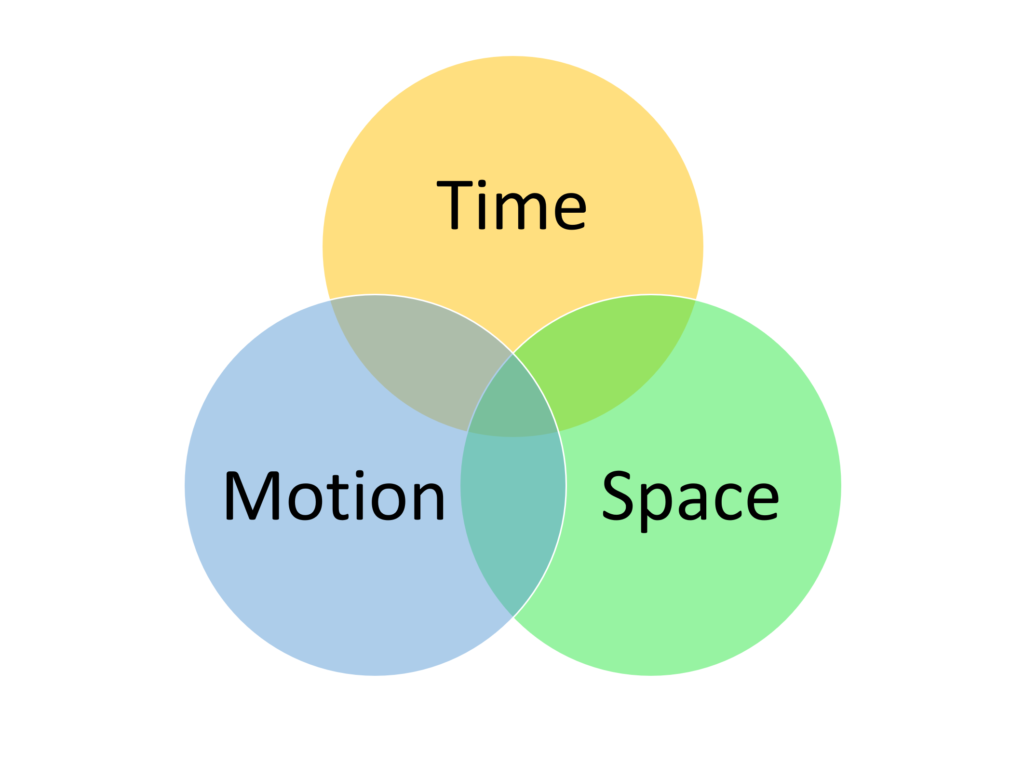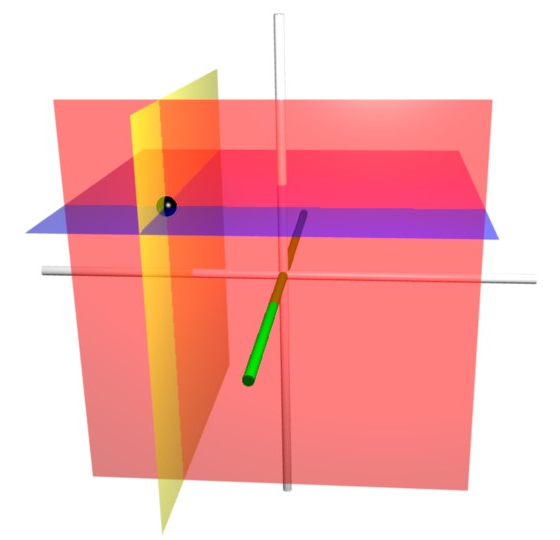Newton, Einstein and Descartes provided us with powerful frameworks for understanding our position in the world. Their frameworks and resulting dimensions allow us to build data models for hyper personalised digital engagement, triadic harmony and a chair travelling at 483,000 mph!
We hear much about how important relationship building is within financial services. With branch and call center contact on a continual and planned decline, doing this within digital is challenging those in charge. At Moroku, we call this challenge the race to the top on emotion, building connection. The answer lies in understanding how to build trust and relationships outside of digital and inside the human condition. We crave to be heard and be empathised with. We seek validation and gratitude for the work we do. We require support and encouragement for sticking at it. We like reward when we win, succeed and hit the fitness payoffs.
Doing this within digital becomes easy once we use data and player maps to determine when to provide these things: Data positioned within player maps help us identify when to provide empathy, gratitude, validation, support and reward. Despite physics appearing as a vastly unemotional subject, its foundations provide us with useful frameworks for understanding how to measure the world around us and how to identify the opportunities for engagement. Physics provides us with the elements of the engagement triad, the aspects to measure and trigger engagement to build relationships.
Triad. Three related things that form a group. There is the classic triad of the visual arts: architecture, painting and sculpture. Major and minor triads form the basis of tonal music such that songs often end with a triadic harmony. In medicine, a triad is a set of three symptoms that go together, such as the 3 C’s of measles: cough, coryza and conjunctivitis.
Engagement. An arrangement to meet or be present at a specified time and place. Something that engages. Emotional involvement or commitment. The state of being in gear. In experience design, engagement refers to involving the customer in some way around the experience so that they are emotionally commited to move.
The Engagement Triad: There are three related elements in experience design that combine to involve users emotionally in the experience and create triadic harmony. They are time, space and motion. These three elements define our position and progress in the world as well as the basis for how we measure engagement. They are based on the work of scientists like Newton, Einstein and Descartes to define ways of measuring the world around us. By measuring a customers relative position in the world, across the axes of time, space and motion we are able to engage them in a way that is meaningful to them, within the system within which they operate (e.g. money) as provided for by the system providers (e.g. financial service providers)
Newton, Einstein and Descartes provided us with powerful frameworks for understanding our position in the world. Their frameworks and resulting dimensions allow us to build data models for hyper personalised digital engagement, triadic harmony and a chair travelling at 483,000 mph!
We hear much about how important relationship building is within financial services. With branch and call center contact on a continual and planned decline, doing this within digital is challenging those in charge. At Moroku, we call this challenge the race to the top on emotion, building connection. The answer lies in understanding how to build trust and relationships outside of digital and inside the human condition. We crave to be heard and be empathised with. We seek validation and gratitude for the work we do. We require support and encouragement for sticking at it. We like reward when we win, succeed and hit the fitness payoffs.
Doing this within digital becomes easy once we use data and player maps to determine when to provide these things: Data positioned within player maps help us identify when to provide empathy, gratitude, validation, support and reward. Despite physics appearing as a vastly unemotional subject, its foundations provide us with useful frameworks for understanding how to measure the world around us and how to identify the opportunities for engagement. Physics provides us with the elements of the engagement triad, the aspects to measure and trigger engagement to build relationships.
Triad. Three related things that form a group. There is the classic triad of the visual arts: architecture, painting and sculpture. Major and minor triads form the basis of tonal music such that songs often end with a triadic harmony. In medicine, a triad is a set of three symptoms that go together, such as the 3 C’s of measles: cough, coryza and conjunctivitis.
Engagement. An arrangement to meet or be present at a specified time and place. Something that engages. Emotional involvement or commitment. The state of being in gear. In experience design, engagement refers to involving the customer in some way around the experience so that they are emotionally commited to move.
The Engagement Triad: There are three related elements in experience design that combine to involve users emotionally in the experience and create triadic harmony. They are time, space and motion. These three elements define our position and progress in the world as well as the basis for how we measure engagement. They are based on the work of scientists like Newton, Einstein and Descartes to define ways of measuring the world around us. By measuring a customers relative position in the world, across the axes of time, space and motion we are able to engage them in a way that is meaningful to them, within the system within which they operate (e.g. money) as provided for by the system providers (e.g. financial service providers)

Newton’s views on space, time, and motion provided the kinematical basis for all of classical physics up until the early twentieth century. It was based on his view that space is distinct from body and that time passes uniformly without regard to events or objects in the world. The planets will move around and apples will fall from trees on a perfectly rigid, unchanging stage of life. That stage is space and time and nothing that happens can affect the stage. Accordingly, time passes equally for everyone no matter what they are doing. That was common sense.
Einstein changed this view in his general theory of relativity to posit that time and space were not the stage but were indeed actors as well. Large objects such as the sun or humans can affect the flow of time and the shape of space with gravitational distortion. The way that time passes for us all is personal, completely dependent on where we are and what we are doing.
With space and time being relative, so too speed. If I am sitting on a chair, my speed relative to that chair is zero. However, I am also sitting in that chair, on a world that is moving through time and space. If I was sitting at the equator, I would be spinning at over a 1,000 mph! Meanwhile the earth is circling the sun at over 60,000 mph. The sun orbits the centre of the milky way once every 225 million years, moving at 828,000 kph. That’s a mighty fast trip on a chair!
Physics and the physical work it explores and seeks to define is parameterised by time, space and motion. It is how we position objects and their activity. Kinematics is the subfield of physics that describes the motion of objects and groups of objects. The position of an object is defined by coordinate vectors using cartesian coordinates across one or more axes/dimensions.
This concept of coordinates is based on the work of French mathematician and philosopher René Descartes who connected algebra and geometry. Cartesian coordinates of a point in space are usually written in parentheses and separated by commas, as in (10, 5) or (3, 5, 7). Generic coordinates are often denoted by the letters (x, y) in the plane, and (x, y, z) in three-dimensional space. Time becomes the fourth dimension. There are a variety of measurements associated with the motion of objects – displacement (and distance), velocity (and speed), acceleration, and time. Knowledge of each of these attributes provides descriptive information about an object’s motion. For example, if a car is known to move with a constant velocity of 22.0 m/s, North for 12.0 seconds for a northward displacement of 264 meters, then the motion of the car is fully described.

From this we realise that:
- We measure an object’s relation to the world based on time space and motion.
- How we do that is dependent on the reference point
- By laying out the dimensions we can define position based on a set of cartesian coordinates
- Only by attributing coordinates of an object across these vectors can an object be fully described.
Bringing this into the context of user engagement we can define a customer’s position in the world based on
- Time (t)– The length of time they are engaged in individual tasks as well as their overall relationship length
- Space (s) or Displacement in terms of the sheer volume of activity they conduct that can be measured by things such as money, content consumed, knowledge gained, challenges overcome and so on
- Motion (m) the speed at which they have carried out such tasks and their current velocity, accelerating or decelerating in pace. Are they getting better. Are they slowing down or speeding up?
For example, if a customer is known to save with a constant velocity (m) of $22.0/month, consistently for 12.0 months (t) for a total saving of $264 (s) , then the motion of the customer is fully described.
Knowing that time, space and motion are relative, we must do this in context to the other players and the stage upon which they are acting. The cartesian way to do this is through the forumation of a muti-dimensional model where time, space and motion are the foundational axes as we add player groups, money systems, markets and others.
These ideas are potent within financial services. An engagement model that connects to the customer about their effort across time, effort (space) and pace keeps them connected to their work, recognising loyalty, hard work and current momentum. Placing these within a set of cartesian coordinates that are kinematically measured, provides lots of opportunities to understadn teh customer more fully, hyper-personalise their experience and provide feedback, empathy and support as they journey. Time, space and motion create the engagement triad.
Financial institutions have a lot of data on their customers. Open Banking is giving them access to more. Moroku Odyssey is a cloud native platform that lays that data out in a player map, to nurture customer journeys across
- Time – the length of the relationship
- Space – the money challenges they have tackled
- Momentum – the progress they have made
By doing so, Odyssey creates a virtuous customer acquisition, retention and advocacy wheel. The platform integrates into a financial institution’s technology platform to transform the technology stack into a customer success platform based on game.